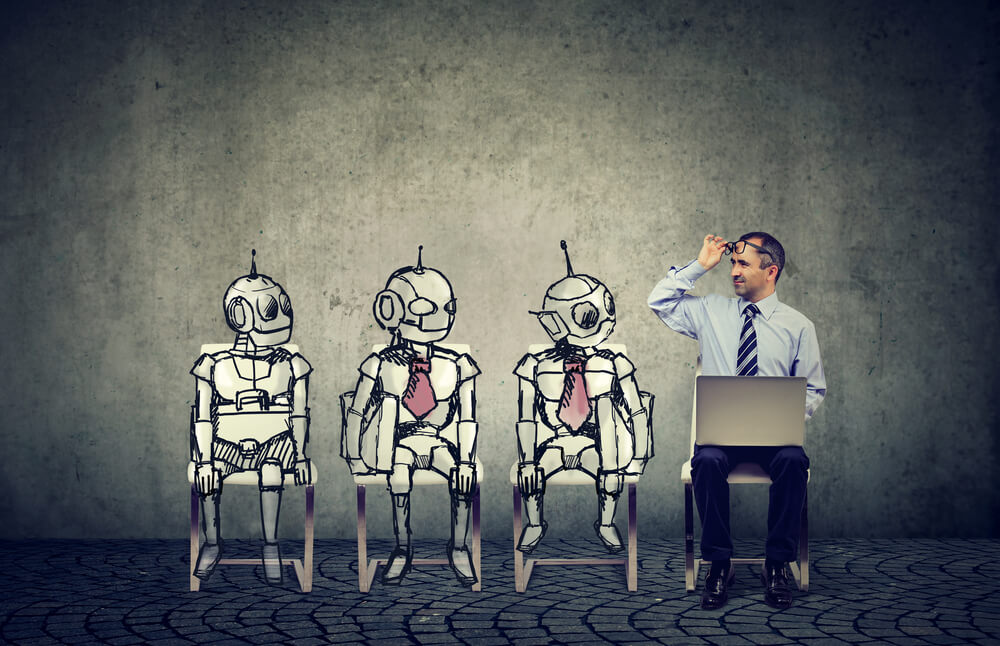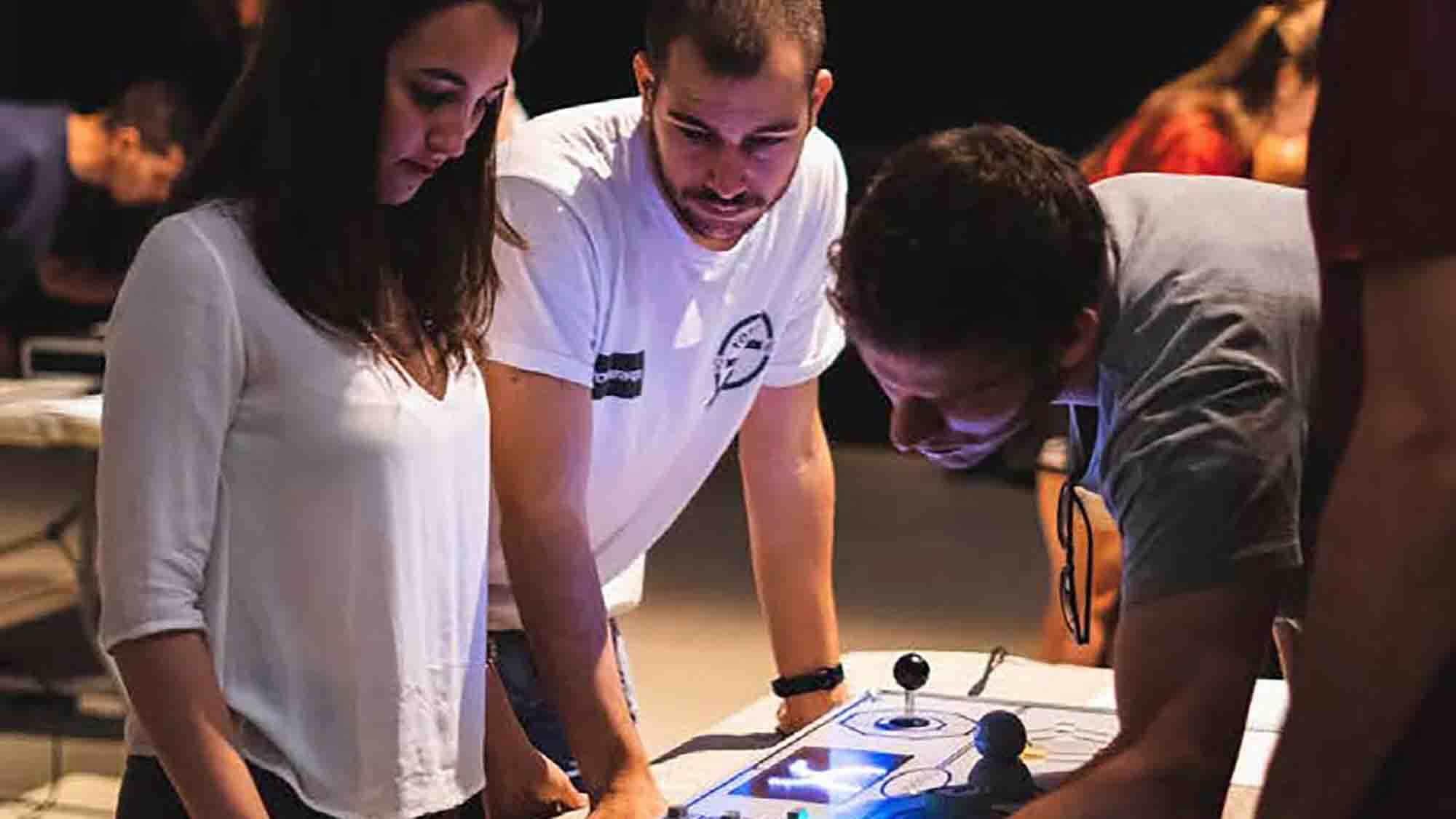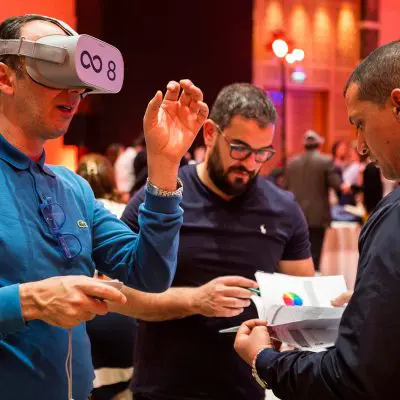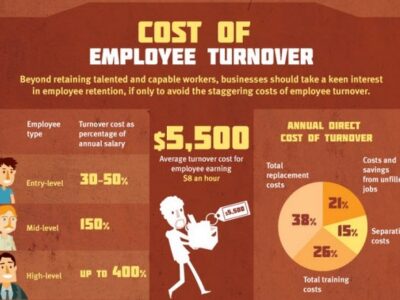Few things in recent years have been as inescapable as AI. No matter what industry you are in, conversations around AI in the workplace are occurring. Though AI isn’t done growing, it’s becoming increasingly clear that it will play a big role in the workplace in years to come.
However, with any technology comes change, and change can be difficult. It means new rules, procedures, methodologies, and more. Most importantly though, it can change company and workplace culture. While that may be worrisome, AI can actually be used for team building and creating a better company culture.
In this blog, we’re going to talk about AI and the role it plays in the workplace and on company culture. We’ll cover the benefits of AI in the workplace, how to use AI at work, its role in company culture, common challenges, and more.
Evolution of AI in the Workplace
First, let’s start off by taking a look at the history of AI as it pertains to the workplace. Though you might think the use of AI is a relatively new thing, people have been using AI at work for decades.
AI really started to be explored in the 50s and 60s by some of the early computer scientists, such as Alan Turing. However, the technology at the time was very limited and only used in the academic world. Still, it laid the groundwork for what was to come.
The 80s is when some of the first businesses actually started to use AI. Some companies industries such as oil and finance began using AI for decision making. An AI would look at all the various market factors and things at play, and it would make risk assessments based on that information. But since this was the early days of AI in the workplace and the internet, it didn’t really take off en masse.
In the 2000s, AI really started to show itself as a power tool for businesses. With the internet taking hold, more and more companies started to see potential uses for AI. Because of the large amounts of data gathered on the internet, AI could be trained on more expansive data sets and ultimately be more useful.
Amazon for example started using AI algorithms for personal recommendations, something that seems standard these days. Still though, the internet was developing and so was AI. While many started utilizing AI, its functionality was still limited compared to what we have today.
By the 2010s though, AI was popping up all over the place. It started being used for customer service chatbots, personalized marketing, searches, fraud detection, automatic financial advising, patient management (in healthcare), research, and more. Still, the AI of 10 years ago almost feels ancient these days.
Moving up to today, AI has quickly become a business necessity. With tools like ChatGPT and the highly specialized AIs being developed, its uses are seemingly endless. Whether it’s decision making, risk assessment, customer service, management, or just speeding up the workflow, AI is an indefensible tool in the workplace.
Furthermore, the AI of today will likely pale in comparison to the AI a decade or even a few years from now. Even with something like ChatGPT, Claude, or Google Bard, a single update can drastically change the abilities of an AI. It’s important to keep a close eye on the future of AI and how it develops. It’s bound to become more and more powerful, making it an even more essential tool for businesses.
Benefits of AI in the Workplace
With the history out of the way, let’s focus a bit on the benefits of AI in the workplace. AI has numerous benefits, and it’s important that you understand those benefits if you want to successfully implement AI into your workplace.
One of the more obvious benefits is an increase in efficiency and productivity. Utilizing AI can help employees speed up their processes, making them more efficient and productive.
For example, say you work in marketing and are tasked with coming up with taglines for an ad. Instead of getting frustrated brainstorming all day, you might ask an AI to come up with potential ideas and use those as a starting point. That speeds up the initial process, helping you get to your end goal more quickly.
Another benefit, which should be obvious given the history of AI in the workplace, is enhanced decision making. AI can process large amounts of data that would take large amounts of time to process on your own. And in doing so, it can give you risk assessment and potential decisions based on said data. This can help you make more well informed decisions quicker.
That’s not all though. AI can also be used to reduce or eliminate repetitive tasks. Certain things just need to be done even though they aren’t particularly difficult, such as entering or transferring data. These things are tedious and time consuming.
However, AI can be used to automate them. As an example, many AIs have the ability of Optical Character Recognition (OCR). This means they can process data from things like paper forms and documents. So an AI can be utilized to automatically gather and enter data from those documents, saving tons of time.
Piggybacking off of that, AI can also improve the employee experience. By automating repetitive tasks and streamlining their workflow, AI can make the day-to-day lives of employees easier. It’s almost having a personal assistant who can help with basic tasks you’d rather not do.
Connection Between AI and Company Culture
While discussing AI, it’s key not to forget about company culture. AI in the workplace can play a big role and help you improve your company culture, so let’s go over a few of the key points.
It’s important for any business or organization to have a defined company culture, and AI can help you define it more clearly. Simply using AI for example demonstrates a forward thinking approach focused on innovation and progress, which can help define who you are as a company.
It can also show that you’re determined to help employees. AI can be used to streamline their day-to-day and make their life easier, showing you’re committed to their wellbeing. It can also be used for training and team building, both of which show you are a business that cares about its employees. All of those things can greatly help define your culture.
AI can also be a powerful tool when it comes to communication. Many AI tools have the ability to streamline communication and provide valuable insights, making communication more efficient and robust. Again, clear communication is an essential part of having a defined company culture.
How to Implement AI at Work
Now, you’re probably wondering “How do I implement AI at work?” But don’t worry; we’re going to cover some of the basics when it comes to AI in the workplace.
Arguably the first thing you should be thinking about is ensuring the ethical use of AI. There are many ethical concerns when it comes to AI, whether that’s taking jobs from employees or plagiarism. As a leader working to implement AI, you need to be cautious and ensure that AI is being implemented ethically.
Another concern is how to integrate it with existing systems. You already have a whole business with workflows, systems, procedures, employees, schedules, and more. If you’re going to introduce a new element (AI in this case), you need to carefully consider how to do so smoothly. Don’t haphazardly implement AI; figure out the details and specifics first.
Before implementing AI, you also need to consider the needs of the business and its employees. Any AI you utilize should have a clear use case that addresses a need. Introducing an AI just so you feel like you’re keeping up with tech instead of introducing it for a specific need often goes poorly.
To be clear, here are a few examples of beneficial and practical uses. Say you have a data analysis team that is focused on interpreting data to empower your decision making. However, they currently spend a lot of their time sorting through data before they can analyze it. Implementing AI could cut down on time spent sorting and give them more time to focus on analysis and interpretation.
Another potential use is writing. Marketing departments for example have a lot on their table these days, especially with social media. However, writing is still a key part of marketing in many ways, and it can be time consuming. A marketing team might utilize AI to write rough drafts of product description or social media posts, allowing the team to focus more on other duties.
Team Building with Artificial Intelligence
As AI grows more common, you’ll need to make sure your team feels comfortable using everyday AI tools. That’s why team building activities are a great opportunity to incorporate AI into the workplace. Here are our favorite team building activities that use AI.
Shark Teams AI
Based on the hit TV show, Shark Teams AI tests your creativity, tech-savviness, and presentation skills. After a quick icebreaker, teams put their heads together to create a new product. The twist? Our expert facilitators help teams brainstorm and prepare using AI tools. After they develop their concepts using AI, each team presents their idea to the sharks.
Charity Guitar Build
Who says music and tech don’t go together? In the Charity Guitar Build, teams build electric guitars to be donated to charity. After the build, teams will use AI-generated music composition tools to create their very own team song. It’s the perfect mix of charitable giving and tech-savvy fun.
Challenges and Considerations
Before wrapping up, let’s talk about challenges and considerations. As mentioned before, implementing AI comes with concerns and potential problems. So let’s address those here.
Tying back into the previous point about ethical concerns, employees will likely have concerns—particularly as it pertains to job loss/replacement. If you want employees to be onboard, you need to make it clear that AI is a supplemental tool and not a replacement for real humans. That can go a long way in easing their concerns.
It’s also important not to forget the importance and value of human connections. AI is an incredibly powerful tool available to us, but so are the relationships we develop as co-workers and team members. They both have a place in the workplace, and it’s important not to overlook one or the other.
Tying into the importance of connections, one way to mitigate concerns about AI is through team building. Team building can help bring employees together, instill confidence, unite them around a purpose, and create a sense of community. It can help show employees that you still value them, their skills, and see them as essential to the workplace for years to come.
Events like Team Synergy and Infinite Loop can help bring your team together and improve their skills, which can in turn mitigate some concerns about AI. These events also utilize AI-driven bots and VR as well, showing how these new tools can be used alongside teamwork to build connections and make your teams even stronger.
Lastly, you need to be vigilant about monitoring and progress. Like any other new tool or program, you need to make sure AI is fulfilling its intended purpose and meeting expectations. You want to continually check its progress, look for improvements, and make adjustments as needed so it can achieve its full potential.
Improve Company Culture with TeamBonding
Though AI still isn’t perfect yet, it has quickly become an essential part of the workplace. That also means it is a key part of workplace culture. When utilized correctly, AI in the workplace can help you better your culture and make it a better place to work for everyone there. Don’t lose sight of the human relationships and connections that make your business unique and special.
If you’re ready to improve your company culture, consider TeamBonding. We have over 25+ years of experience in the world of corporate events, and we have numerous events that can help you keep that human connection alive. So get in touch with us today and start changing your culture for the better.


















